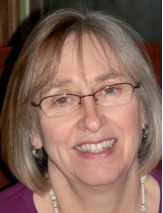 The Wilmot Post Office is decorated nicely for the holidays. Besides the garlands and bows, there is a yellow train in the left window. This old wooden building used to include a general store as well. To the left is the recently rebuilt Wilmot Community Center.
The Wilmot Post Office is decorated nicely for the holidays. Besides the garlands and bows, there is a yellow train in the left window. This old wooden building used to include a general store as well. To the left is the recently rebuilt Wilmot Community Center.The town of Wilmot is rather spread out, but this part of the small town is within 5 miles of our house. For last month’s blog post I drew the library and a mountain view. This month I participated in a craft fair in the red building, and sold cards including this drawing of the post office. And lots of other designs as well. I can turn any of the images on the blog into a card upon request! Contact me if you’re interested.
I keep small paper and drawing supplies in my bag at all times. I am always ready.
I was a printmaker for a long time. I printed etchings and relief prints on a large motorized press. I loved the whole process for decades. Then one day my arms told me that they had had enough of inking each print. I still like the idea of multiples, and now my husband prints reproductions of my drawings on our home HP printer. I do paint again now too.
 Our town of New London has about 4,000 residents. We have a wonderful Historical Society. Each December there is an open house in the many buildings.
Our town of New London has about 4,000 residents. We have a wonderful Historical Society. Each December there is an open house in the many buildings.My favorite is the country store. It is nicely warmed with a wood stove, and serves hot cider, cheese sandwiches and cookies. I drew this decorated window sill in the country store building. I was so taken with its charming arrangement of clove-stuck oranges, pine cones, gingerbread cookies, and evergreens.
I sipped my hot apple cider as I drew. (In the U.S., cider is a non-alcoholic drink, unless otherwise stated.) Mount Sunapee is in the distance. The ground was still bare at this point.
 Here is almost bird’s eye view of Mount Kearsarge and Pleasant Lake in New London, NH. I do like to drive up to Morgan Hill to get this panorama. It is fascinating to watch the colors change as the clouds sweep over the terrain, shifting the light constantly.
Here is almost bird’s eye view of Mount Kearsarge and Pleasant Lake in New London, NH. I do like to drive up to Morgan Hill to get this panorama. It is fascinating to watch the colors change as the clouds sweep over the terrain, shifting the light constantly.I hope it is clear that there is a very steep drop to the lake. I think the tops of the tall pine trees indicate that well. There is one little island, called Blueberry Island. Our house is in the woods off to the right, off the edge of the drawing.
 One day I saw the firemen rolling out the canvas rink, and filling it with water. A few days later I saw my chance to draw some skaters. The background buildings are: a skate hut (a recent Eagle Scout public service project), the town offices, the band stand gazebo, two brick buildings on the Colby-Sawyer College campus , the town hall of New London, and the Baptist church. The snow has arrived in our hill town.
One day I saw the firemen rolling out the canvas rink, and filling it with water. A few days later I saw my chance to draw some skaters. The background buildings are: a skate hut (a recent Eagle Scout public service project), the town offices, the band stand gazebo, two brick buildings on the Colby-Sawyer College campus , the town hall of New London, and the Baptist church. The snow has arrived in our hill town.The tower on the far right is not really quite that tall. It is twice the height of the main part of the church. I left my architectural miscalculation in place. It seems enormous. And a feat for it to remain upright. All the buildings are of wooden construction except the brick ones.
In North American usage, the word ‘college’ means an institution of higher learning, granting undergraduate degrees, such as a Bachelor of Arts. Usually students are ages 18-21. When we lived in England this term caused us much confusion. Our town had a Ladies College, which seemed to mean a very selective high school, ages perhaps 12-18.
 This is a toy that my husband played with when he was a child—a Christmas present from an uncle who was really good at picking out that sort of stuff for his only nephew. I got motivated to draw it after drawing a doll last month.
This is a toy that my husband played with when he was a child—a Christmas present from an uncle who was really good at picking out that sort of stuff for his only nephew. I got motivated to draw it after drawing a doll last month.It is a metal steam shovel that is meant to be sat upon. Then you swivel, and pivot the shovel. Last summer we sat on the ground with our 2 year old grandson and watched large machinery like this in operation. Fun for all of us!
If only my father-in-law hadn’t painted it! We know from watching Antiques Roadshow that this greatly reduces the value. Oh well. We enjoy both the American version of the TV show and the original one from England. We lived in England for 3 years, so the show brings back all kinds of fond memories.






















































